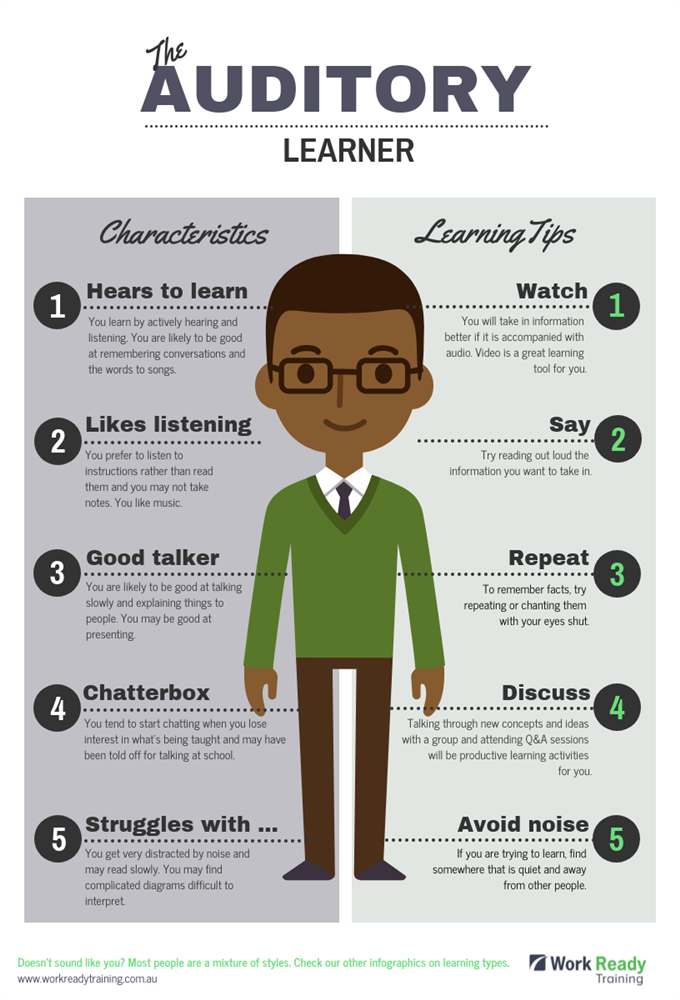
You also don’t want to rush or cut corners during a demonstration. You may have to get pretty creative, but the main thing is to position yourself so that everything you’re doing is available for viewing. If you’re demonstrating a technique and part of the movement is hidden from view, you’ll want to find a way to rearrange things. The first is to make sure you are showing the movements as completely and clearly as possible. There are two important guidelines to follow in coaching for visual learners. It’s just a little sign that the person you’re coaching may be a visual learner. You can sometimes tell you’re dealing with a visual learner when they ask, “ Can I see that again?” Other types of learners would ask if you could do it again, or explain it again, but visual learners will often say they want to see it. Visual learners prefer to watch demonstrations and will often get a lot out of video taped instruction as well. Since about 60% of people are visual learners you can count on working with them in every class you teach. It’s the old monkey see, monkey do kind of thing.
Auditory learning style disadvantages how to#
They prefer to see how to do things rather than just talk about them. As you can guess, visual learners learn predominantly with their eyes. Like the other two, visual learning relates to the fundamental ways in which people take-in information. The visual style of learning is one of the three sensory learning styles along with auditory and kinesthetic.

Visual Learning Styleįirst we’ll look at the visual learning style and how best to teach people who use it. Make sure you’re doing all you can for each style and pay particular attention to how you can blend the styles together.įinally, and perhaps most importantly, you should help your students discover their own learning styles and how to make the most of them. Don’t get stuck teaching in just one mode. The key for you as a coach is to present information in a multi-layered mixture of styles. Everyone can develop ability in their less dominant styles, as well as increase their skill with styles they already use well. People’s learning styles are also quite flexible. Some people have one dominant style, and use the others only as supplements, while other people use different styles in different circumstances.

I’ve covered each of these sensory learning styles in their own article, linked at the bottom of this page.Īs you read the articles keep in mind that everyone uses a mix of learning styles. Kinesthetically oriented people want to get lots of hands-on experience so they can feel how something is done. Auditory learners prefer to hear explanations and like to talk their way through things. Visual learners want to see how something is done. I cover three basic styles: visual, auditory and kinesthetic. As a coach you can help your players train more efficiently if you teach in a way that takes into account the various differences in their learning styles. People learn in many different ways and no two people learn in exactly the same way.

Thanks to Charles Smith, the author of this article, for letting us post it here at. Stephan’s note: this article is from, which features book, video and grappling gear reviews as well as many fine articles on coaching and training in the grappling arts. Visual, Auditory and Kinesthetic Learning Styles in Grappling


 0 kommentar(er)
0 kommentar(er)
